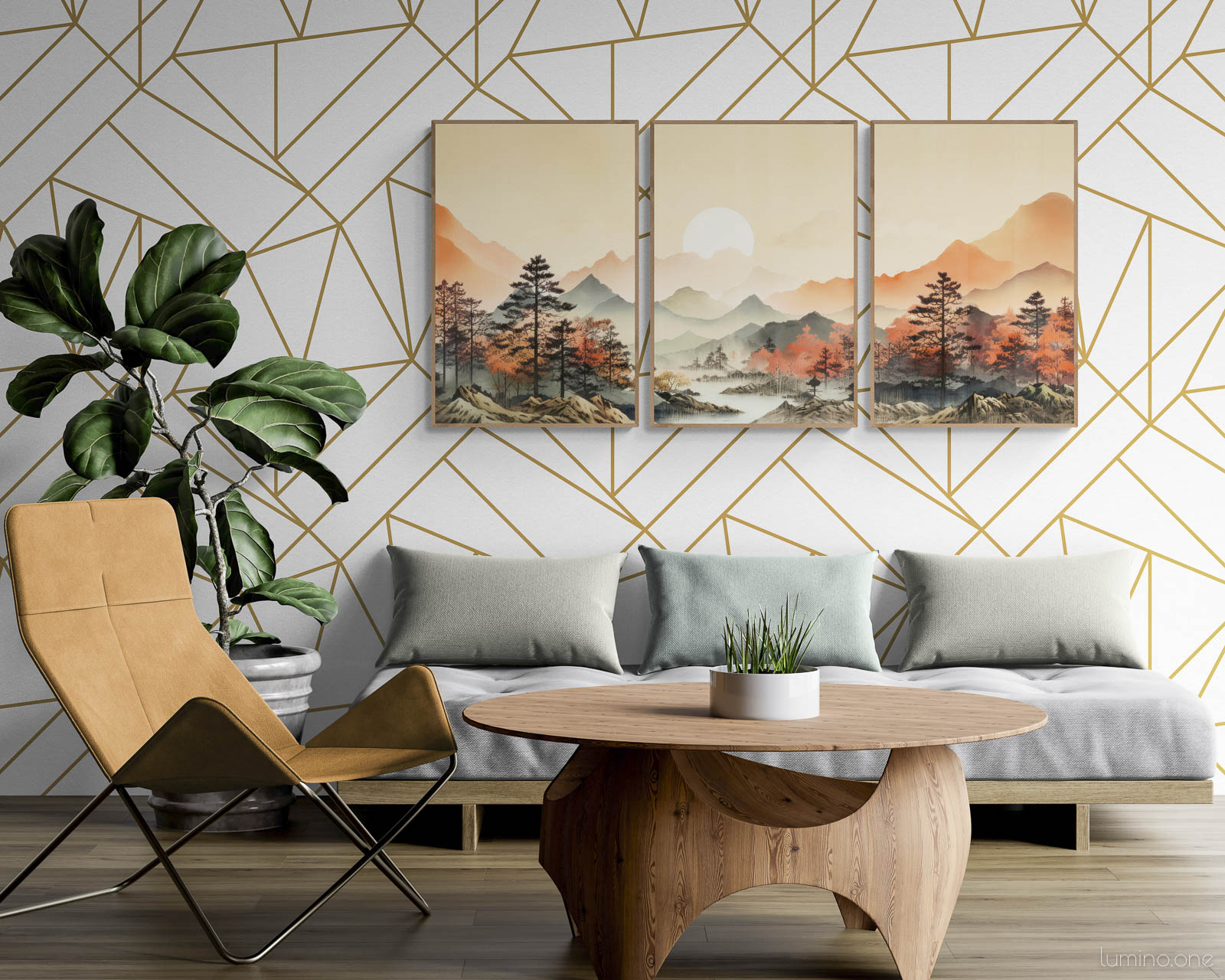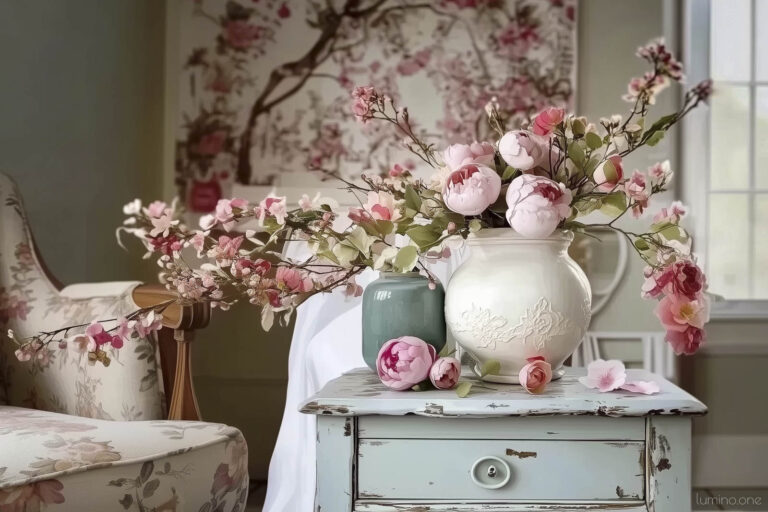Have you ever walked into a room and felt something was off, but couldn’t quite put your finger on it? Often, the placement of art is the culprit. One of the reasons this happens is the lack of balance between the wall art and the furniture in your room. When done right, art placement can enhance the aesthetics and harmony of your space. So, should you center your art on the wall or the couch? Let’s delve into the details.
Why Centering Art Above the Couch is Preferred
Centering art above the couch is often the preferred approach for creating a visually appealing and harmonious living space. This placement draws attention to the sofa, which is usually the room’s dominant feature, and ensures a balanced and cohesive look. By highlighting the central seating area and creating a unified focal point, centering art above the couch helps to establish a well-designed and inviting environment.
Visual Anchoring
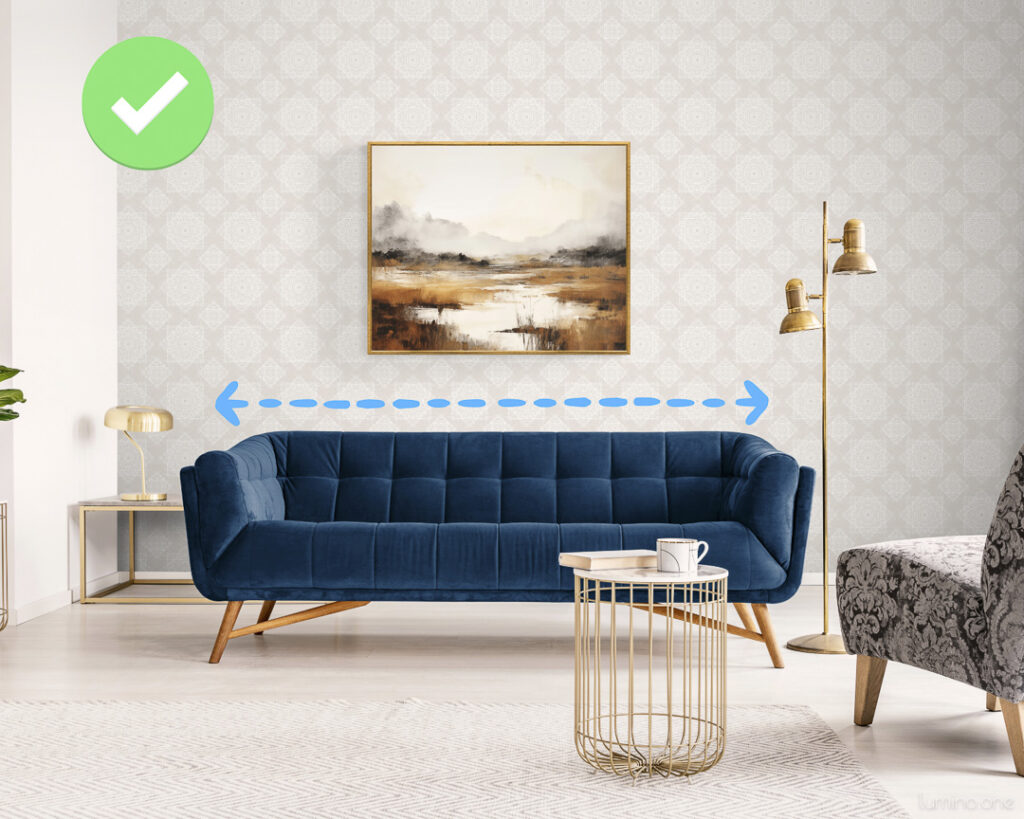
The sofa often stands as the most dominant piece of furniture in a living room. By centering art above it, you draw attention to this central feature, creating a cohesive and visually appealing focal point. This strategy not only highlights the sofa but also grounds the entire seating area, giving the room a sense of stability and unity.
Moreover, centering art above the sofa enhances the visual hierarchy of the space. It naturally directs the viewer’s attention to the primary area of the room, ensuring that the sofa and artwork complement each other perfectly. This thoughtful placement makes the room feel more curated and intentionally designed.
Symmetry and Balance
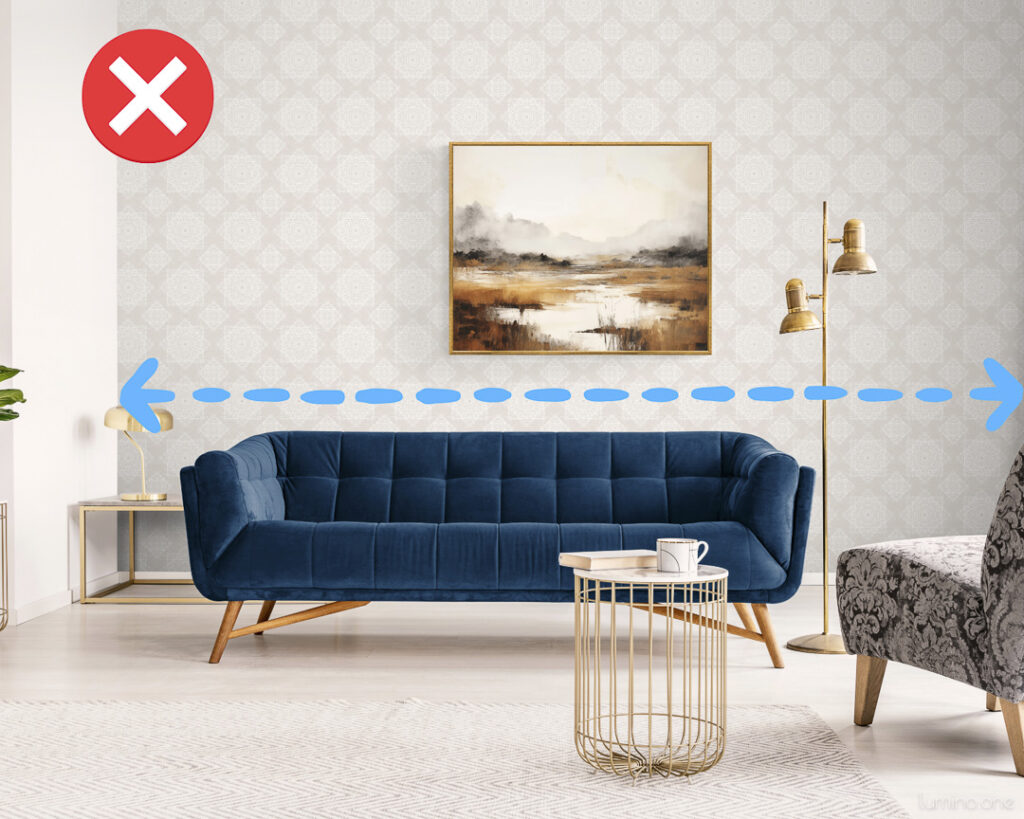
Placing art directly above your couch creates a sense of balance and symmetry. This arrangement immediately draws the eye to the seating area, establishing it as the room’s focal point. Symmetry in design is inherently pleasing and can make a space feel more orderly and serene.
Additionally, centering art above the sofa ensures that the room’s proportions are visually balanced. This placement allows the artwork to mirror the shape and size of the sofa, creating a harmonious relationship between the furniture and decor. Achieving this balance is key to avoiding a cluttered or chaotic appearance, contributing to a peaceful and aesthetically pleasing environment.
Practical Tips for Centering Art Above the Sofa
- Height: Hang your art so that the center is at eye level, typically around 57-60 inches from the floor.
- Proportion: The size of the art relative to the sofa is crucial. A good rule of thumb is to choose artwork that is about two-thirds to three-quarters the width of the sofa. This proportion ensures that the art complements rather than overwhelms the furniture.
- Testing Layouts: Use painter’s tape to outline different placements before committing. This helps visualize the final look.
Exceptions: When to Center Art on the Wall
While centering art above the sofa is often the best choice, there are exceptions where centering on the wall might be better:
Open-Concept Living Areas
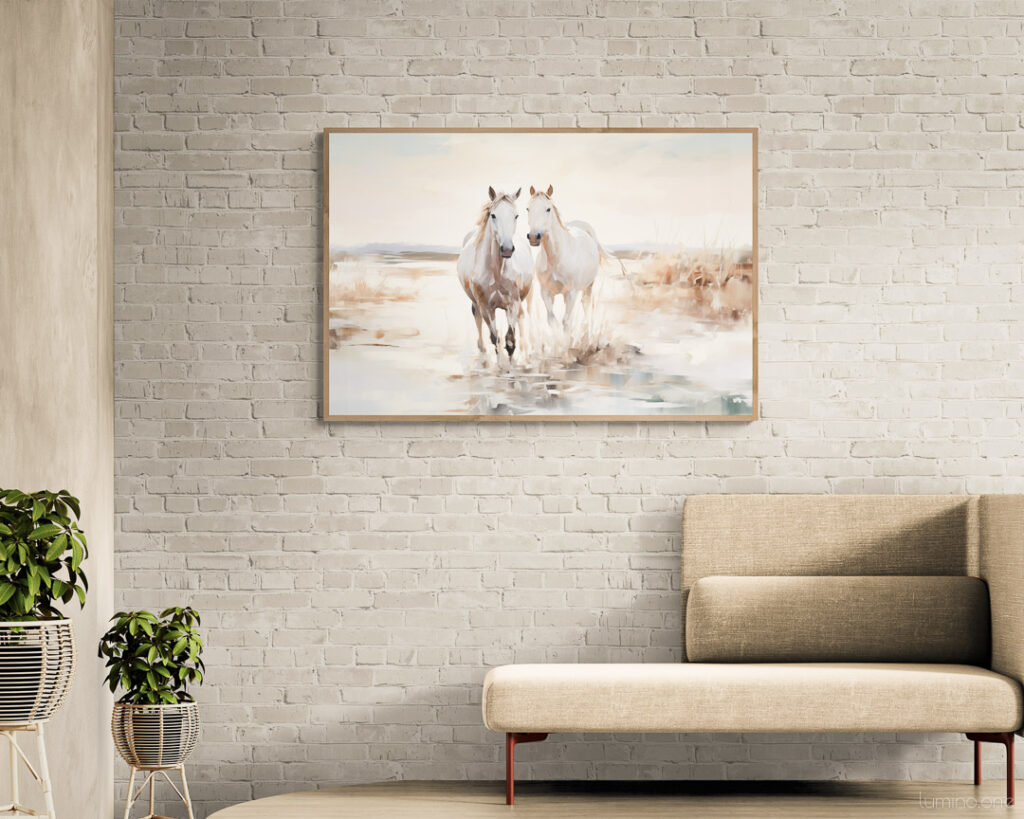
If the wall extends significantly beyond the sofa, centering art on the wall can create a balanced look across the entire space.
In open-concept living areas where walls span different functional zones, centering art on the wall can enhance the room’s flow and connectivity.
Multiple Focal Points
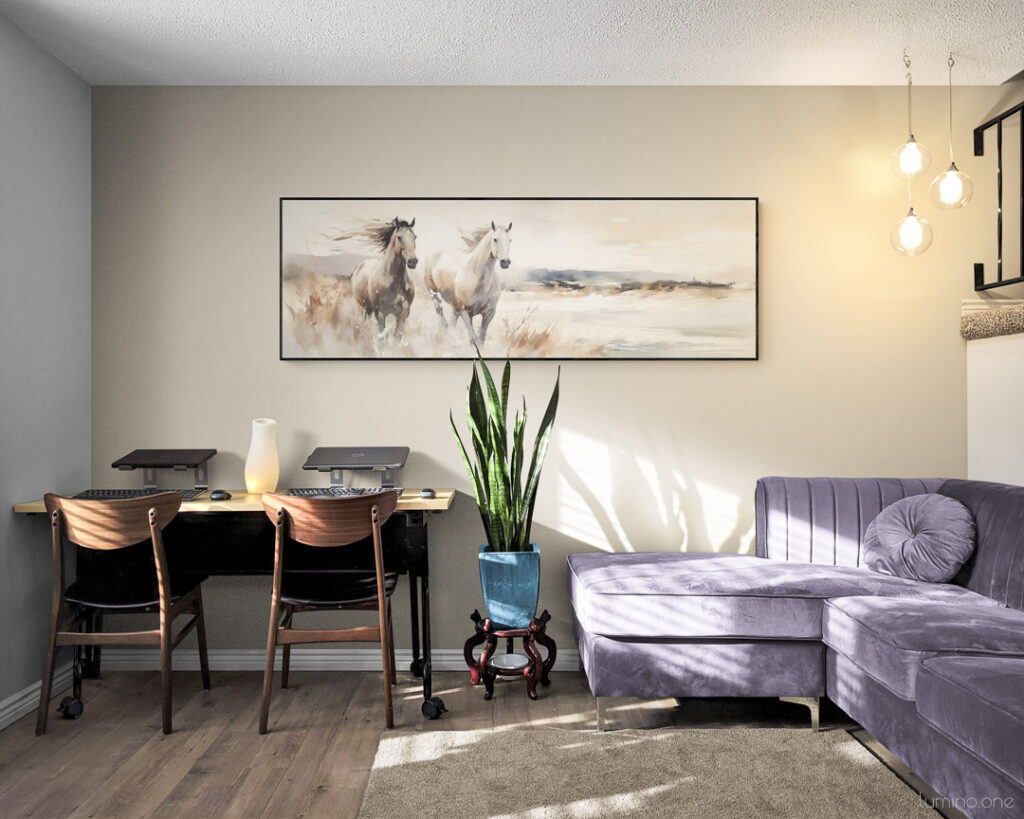
In rooms with multiple focal points or architectural features, such as windows or doorways, centering art on the wall can help maintain a smooth visual flow.
Complement Surroundings
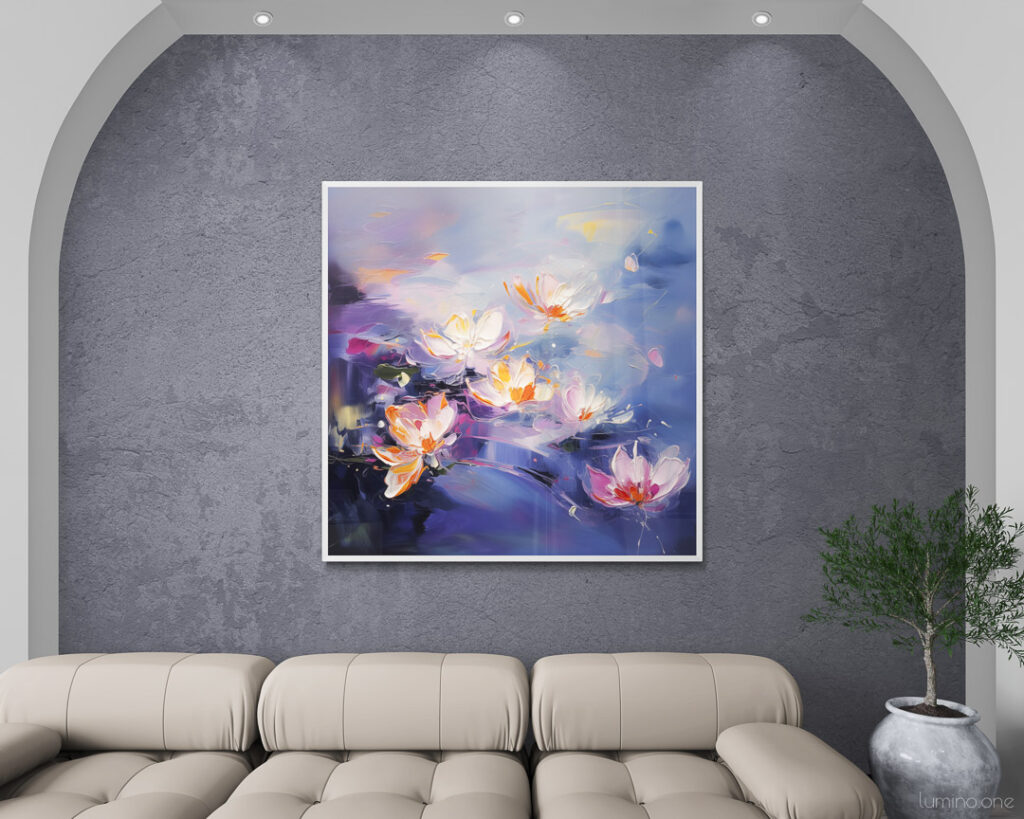
Consider windows, doors, and other furniture to ensure the art placement complements the entire room.
Gallery Walls
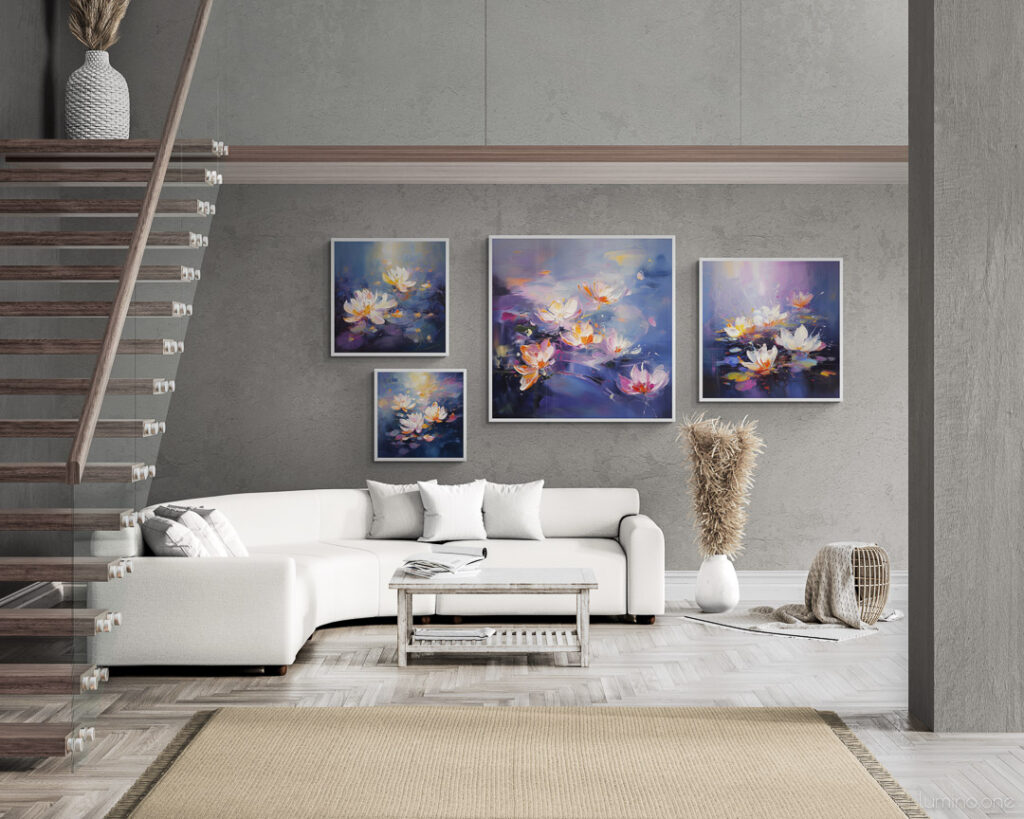
For those who love the eclectic charm of a gallery wall, centering art on the wall makes more sense. This arrangement allows for a more dynamic and engaging display, showcasing various art pieces without being confined to the sofa’s dimensions.
If you are considering a gallery wall project, we’ve created a comprehensive guide to gallery walls that will help you avoid some of the common pitfalls.
Asymmetrical Furniture Layouts
If your furniture layout is intentionally asymmetrical, centering art on the wall can complement the design and create an interesting visual balance.
Visual Elements to Balance Your Space
Incorporating Shelves

If an empty space next to the sofa creates a visual imbalance, you can add a floating shelf or a bookshelf to compensate. These additions offset the visual weight of the sofa and balance out the artwork placed above it, creating a more harmonious and well-proportioned room.
Adding Plants
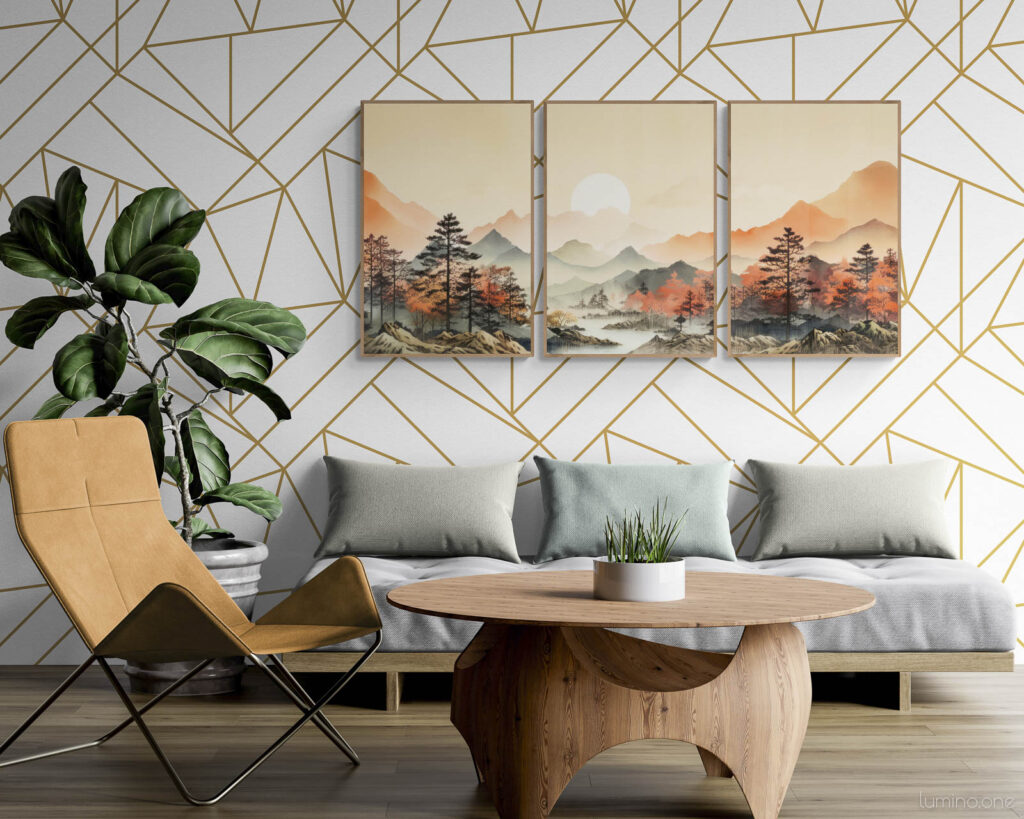
A plant can also achieve the same effect, bringing balance to the room. Plants add a touch of nature and freshness to your space, complementing your art while adding layers of texture and color. By placing a plant next to the sofa, you can offset any visual imbalance and enhance the overall aesthetic of your room.
Conclusion
Deciding whether to center art on the wall or the sofa depends on various factors, including room layout, personal style, and functionality. While centering art above the sofa is often the preferred approach, especially if the sofa is the most dominant object on the wall, there are exceptions where centering on the wall might be better. By considering these factors and following practical tips, you can create a beautifully balanced and visually appealing room.
Key Takeaway
Centering art above the sofa is generally the best approach when the sofa is the dominant object on the wall, as it creates balance, proportion, and a focal point. However, in cases of extended wall space, multiple focal points, gallery walls, open-concept spaces, or asymmetrical layouts, centering art on the wall may be more effective.
***
By understanding the principles of art placement and experimenting with different arrangements, you can transform your living space into a gallery that reflects your style and enhances your home’s ambiance. So, what will you choose for your next decor project? Will it be the wall or the sofa?

